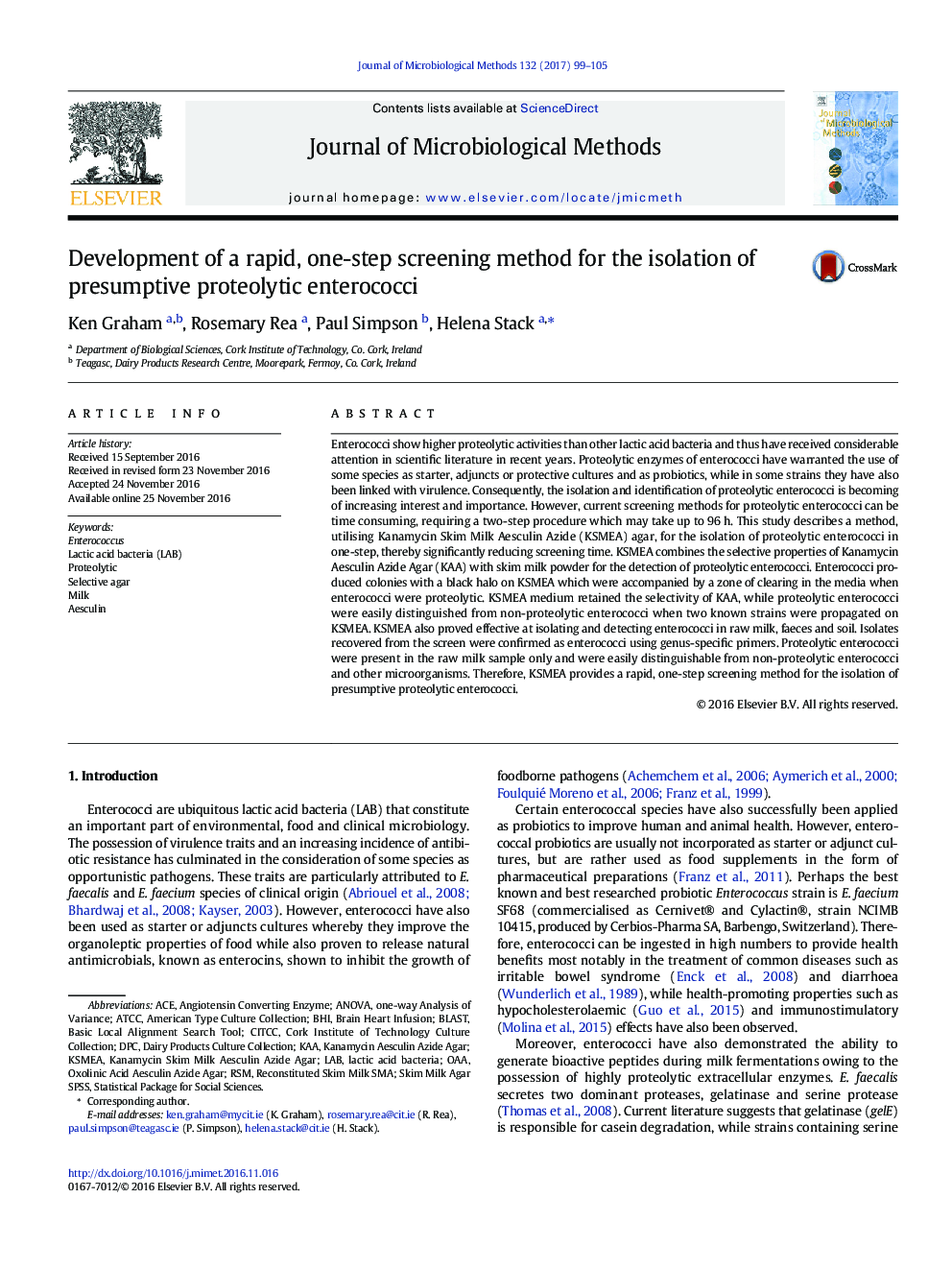| کد مقاله | کد نشریه | سال انتشار | مقاله انگلیسی | نسخه تمام متن |
|---|---|---|---|---|
| 5522337 | 1545911 | 2017 | 7 صفحه PDF | دانلود رایگان |
- Development of a rapid, one-step screening method for proteolytic enterococci
- Consists of an agar based on esculin and protein hydrolysis
- Selectivity of the agar is consistent with commercial selective agar for enterococcus.
- Proteolytic enterococci are easily distinguished from non-proteolytic enterococci.
- The method can detect proteolytic enterococci in milk, faeces and soil.
Enterococci show higher proteolytic activities than other lactic acid bacteria and thus have received considerable attention in scientific literature in recent years. Proteolytic enzymes of enterococci have warranted the use of some species as starter, adjuncts or protective cultures and as probiotics, while in some strains they have also been linked with virulence. Consequently, the isolation and identification of proteolytic enterococci is becoming of increasing interest and importance. However, current screening methods for proteolytic enterococci can be time consuming, requiring a two-step procedure which may take up to 96Â h. This study describes a method, utilising Kanamycin Skim Milk Aesculin Azide (KSMEA) agar, for the isolation of proteolytic enterococci in one-step, thereby significantly reducing screening time. KSMEA combines the selective properties of Kanamycin Aesculin Azide Agar (KAA) with skim milk powder for the detection of proteolytic enterococci. Enterococci produced colonies with a black halo on KSMEA which were accompanied by a zone of clearing in the media when enterococci were proteolytic. KSMEA medium retained the selectivity of KAA, while proteolytic enterococci were easily distinguished from non-proteolytic enterococci when two known strains were propagated on KSMEA. KSMEA also proved effective at isolating and detecting enterococci in raw milk, faeces and soil. Isolates recovered from the screen were confirmed as enterococci using genus-specific primers. Proteolytic enterococci were present in the raw milk sample only and were easily distinguishable from non-proteolytic enterococci and other microorganisms. Therefore, KSMEA provides a rapid, one-step screening method for the isolation of presumptive proteolytic enterococci.
Journal: Journal of Microbiological Methods - Volume 132, January 2017, Pages 99-105
